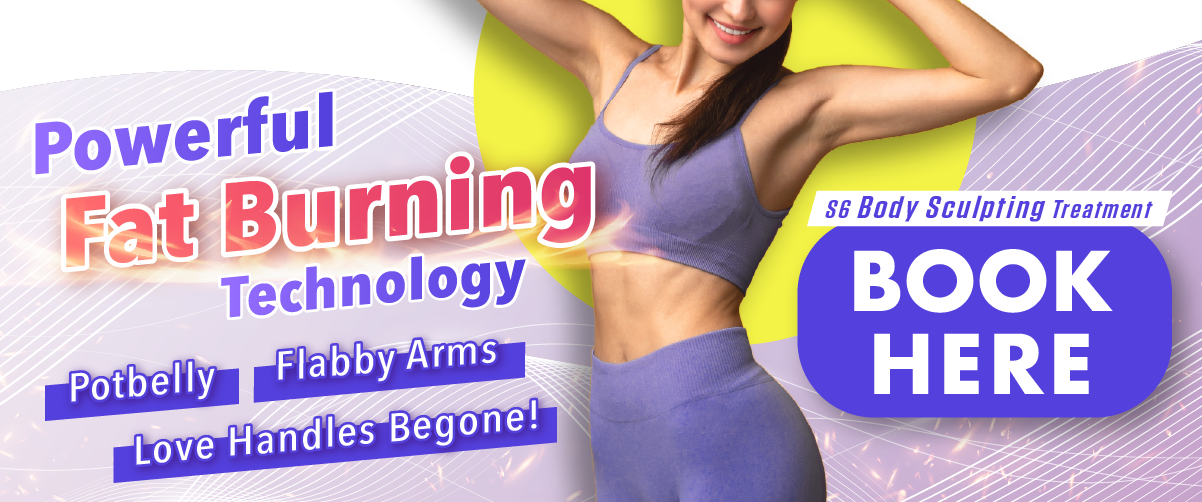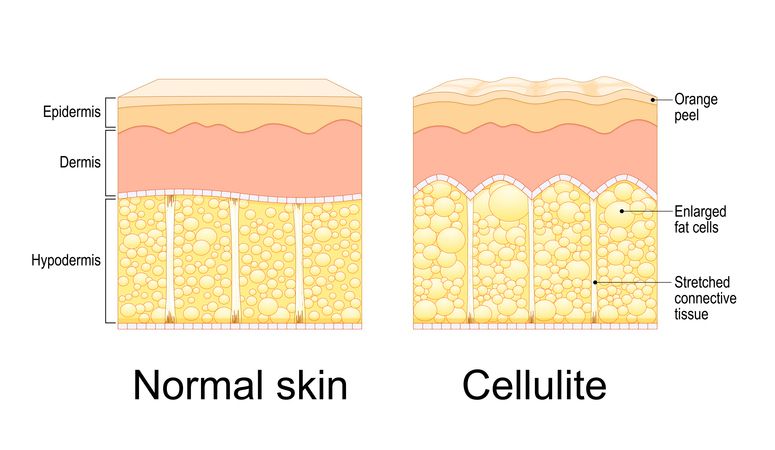
Author: Natalie Ng|Updated: 8 May 2025
If you have an endomorphic body type, you probably gain weight easily and find it harder to lose fat. Your body stores more body fat, builds muscle faster, but burns calories more slowly. These traits can make weight loss feel frustrating, especially if you're eating less and moving more without seeing results. You may also notice that eating a lot of carbs leads to quick weight gain or that your energy drops after meals. This often links to insulin resistance, which makes it easier for your body to store fat and harder to use it for energy. A slower metabolism adds another challenge, making it important to be more careful with your calorie intake and activity level. To lose weight as an endomorph, you need to focus on strategies that fit your body’s needs. That includes eating fewer calories from processed foods, moving more throughout the day, and building muscle with the right kind of exercise. This guide will help you understand how to burn fat, improve your body composition, and use your strengths—like higher muscle mass—to reach your fitness goals.

Understanding the Endomorph Body Type

Characteristics of the Endomorphic Body
If you have an endomorphic body type, you likely have a rounder physique with a higher percentage of body fat. This body type is characterized by a larger bone structure, broader hips, and a tendency to gain weight more easily, especially in the lower body. Endomorphs generally have a slower metabolism than ectomorphs and mesomorphs, leading to increased fat storage and difficulty losing weight.
Common Issues: Insulin Resistance and Metabolic Syndrome
Endomorphs often face specific health challenges related to their body type, particularly concerning metabolism and fat storage. Research indicates that endomorphs may have a higher propensity for insulin resistance, which can lead to conditions such as type 2 diabetes if not managed effectively.
Insulin resistance occurs when your cells have difficulty responding to the insulin your pancreas produces, affecting your blood glucose levels. For most endomorphs, excess fat frequently collects around the waist area in the form of visceral fat, which can cause insulin resistance in some people.
Impact of Calorie Intake and Blood Sugar Spikes
Endomorphs may be more sensitive to calorie consumption than individuals with other body types. Consuming excessive calories, especially from high-carbohydrate foods, can lead to rapid spikes in blood sugar levels. These spikes can cause the body to store more fat, particularly in the abdominal area, and contribute to insulin resistance.
To manage weight effectively, it's important for endomorphs to monitor their calorie intake and focus on a diet that stabilizes blood sugar levels. This includes consuming complex carbohydrates, lean proteins, and healthy fats, while avoiding processed foods and simple sugars that can lead to blood sugar spikes.
By understanding these characteristics and challenges, you can tailor your diet and exercise plan to better suit your body's needs, aiding in weight loss and overall health improvement.

How Your Body Stores and Burns Fat

Your Metabolism Works Slower
If you're an endomorph, your body burns fewer calories at rest compared to other body types. This slower metabolism means that even with moderate food intake, you might still gain weight. To manage this, focus on increasing your daily physical activity and incorporating exercises that boost your metabolic rate.
You Store Fat More Easily
Endomorphs tend to store excess calories as fat more readily. This is especially true when consuming high amounts of carbohydrates or calories beyond your body's needs. Being mindful of portion sizes and choosing nutrient-dense foods can help control fat accumulation.
Insulin Resistance Can Be a Factor
Many endomorphs experience insulin resistance, where your body's cells don't respond effectively to insulin. This can lead to higher blood sugar levels and increased fat storage. Managing carbohydrate intake and choosing low-glycemic foods can help mitigate this issue.
Building Muscle Helps Burn Fat
Incorporating strength training into your exercise routine can help build muscle mass. More muscle increases your resting metabolic rate, allowing you to burn more calories even when you're not exercising. Focus on compound exercises that work large muscle groups for the best results.
High-Intensity Workouts Boost Calorie Burn
High-intensity interval training (HIIT) can be particularly effective for endomorphs. These workouts involve short bursts of intense activity followed by brief rest periods, helping to burn a significant number of calories in a short time. Regular HIIT sessions can improve insulin sensitivity and support fat loss.
By understanding how your body stores and burns fat, you can tailor your diet and exercise plan to work with your body's natural tendencies, making weight loss more achievable.
Book Now to Experience
S6 Body Sculpting Treatment
1 Minute Self-Registration
Date should not be before minimal date

IV. What to Eat and Avoid on an Endomorph Diet

Choose Lean Protein Sources
Prioritize lean proteins to support muscle maintenance and promote satiety. These include:
• Chicken breast
• Turkey breast
• Eggs
• Low-fat dairy products
• Tofu
• Legumes
• Fatty fish like salmon and mackerel
Incorporating these proteins into your meals can help you feel full longer and reduce overall calorie intake.
Incorporate Healthy Fats
Include healthy fats to support overall health and satiety. Opt for:
• Olive oil
• Avocados
• Nuts and seeds
• Fatty fish
These fats can help regulate blood sugar levels and reduce inflammation.
Focus on Complex Carbohydrates
Select complex carbohydrates that provide sustained energy and are less likely to cause blood sugar spikes. Examples include:
• Whole grains like brown rice and quinoa
• Legumes such as lentils and chickpeas
• Starchy vegetables like sweet potatoes
• Non-starchy vegetables including leafy greens and broccoli
These choices can help manage insulin sensitivity and support weight loss efforts.
Limit or Avoid Certain Foods
To reduce excess calorie intake and prevent fat storage, limit or avoid:
• Refined carbohydrates like white bread and pasta
• Sugary snacks and beverages
• Processed foods high in trans fats
• High-fat dairy products
Focusing on whole, unprocessed foods can aid in achieving and maintaining a healthy weight.
By tailoring your diet to include these nutrient-dense foods and avoiding those that hinder progress, you can better manage your weight and improve overall health.

V. Best Exercises for Endomorph Weight Loss
1. Use Strength Training to Build Muscle
Strength training helps you build and maintain muscle mass. More muscle increases your resting calorie burn, which supports fat loss. Focus on large muscle groups such as your legs, back, and chest to get the most benefit. Use compound exercises like squats, deadlifts, rows, and bench presses. These moves activate more muscles and help you burn more calories in each session.
2. Add High-Intensity Interval Training
High-intensity interval training, or HIIT, involves short bursts of hard effort followed by rest. This method is effective for burning calories quickly and improving insulin sensitivity. For example, alternate 30 seconds of sprinting with 1 minute of walking. You can apply the same format to cycling, jumping rope, or bodyweight circuits. Doing HIIT two to three times a week can help reduce body fat faster than steady cardio alone.
3. Increase Daily Movement with NEAT
Non-exercise activity thermogenesis (NEAT) refers to the calories you burn through everyday movements. These include walking, taking stairs, doing chores, or standing instead of sitting. NEAT plays a big role in total calorie burn, especially if you have a slower metabolism. Aim to move more throughout the day even outside of workouts. Small actions like walking after meals or using a standing desk can make a big difference over time.
4. Stay Consistent and Track Progress
Endomorph weight loss requires steady effort. Track your workouts and monitor how your body responds. You may not see fast changes, but consistent effort in both training and diet will help you lose fat and increase muscle mass over time. Set realistic goals and adjust your plan based on progress, not speed.
Combining regular strength training, short intense cardio, and more daily movement gives you the best chance to boost your metabolism, burn excess body fat, and improve your body composition.

Daily Habits to Support Endomorph Weight Loss
1. Manage Your Calorie Intake
As an endomorph, you tend to gain weight more easily because of a slower metabolism and higher fat storage. To lose fat, you need to eat fewer calories than your body uses. Focus on your total calorie intake and avoid excess calories from high-sugar or processed foods. Knowing how many calories your body needs each day helps you avoid gaining excess weight.
2. Eat a Balanced Diet with Whole Foods
Your nutrition plan should support fat loss, muscle growth, and steady energy. Build each meal using lean protein, healthy fats, and complex carbohydrates.
Meal examples
• Grilled chicken breast with brown rice and leafy greens
• Scrambled eggs with vegetables and a slice of whole grain toast
• Almond milk snack or a small handful of nuts and seeds
Balanced meals keep you full and reduce the chance of overeating.
3. Choose the Right Carbohydrates
Controlling carbohydrate intake is especially important for your body type. Stick to whole grains, legumes, and fiber-rich vegetables to reduce blood sugar spikes and limit fat storage. Avoid white bread, sugary cereals, and processed snacks. This helps your body use carbs for energy instead of storing them as excess body fat.
4. Limit Processed Foods and Sugary Drinks
Processed foods often contain added sugars, poor-quality fats, and ingredients that promote fat gain. These foods increase more body fat and worsen insulin resistance. Replace them with real foods like fatty fish, leafy greens, eggs, and olive oil. A paleo diet or healthy diet can help you burn fat and improve body composition.
5. Stay Physically Active Every Day
Regular movement helps you burn calories and avoid storing fat. Increase your non exercise activity thermogenesis by walking, cleaning, or standing during the day. These actions make it easier to reduce excess fat and meet your fitness goals.
6. Get Consistent Sleep
Lack of sleep affects hormones that control hunger and fat storage. Aim for at least 7 hours of quality rest each night to support muscle mass, energy levels, and overall weight loss. Good sleep also helps with recovery after exercise and supports your body’s ability to boost metabolism.
7. Monitor Your Progress Weekly
Track more than just body weight. Take note of how your clothes fit, how your strength improves, and how your energy feels. Watch for fat loss around areas that typically hold excess body fat. Use these signs to adjust your diet and exercise plan as needed, especially if you notice you’re eating more calories than you're burning.
Book Now to Experience
S6 Body Sculpting Treatment
1 Minute Self-Registration
Date should not be before minimal date

Common Mistakes That Make Endomorph Weight Loss Harder

1. Eating Too Many Processed Carbs
High-carb processed foods can spike your blood sugar and promote fat storage. As an endomorph, your body doesn’t process these foods as efficiently. Eating foods like pastries, chips, or white pasta can make it harder to lose weight and easier to gain fat.
2. Ignoring Strength Training
If your workouts focus only on cardio, you may miss the chance to build muscle and improve your metabolism. Strength training helps you increase muscle mass, which boosts your daily calorie burn. It also shapes your body and supports a more athletic physique over time.
3. Not Tracking Your Food
It’s easy to overeat, even with healthy food. Without knowing your calorie consumption, you might eat more calories than you think. Tracking meals helps you stay aware of portions and stick to your plan. This is especially important if you're trying to improve insulin sensitivity or manage metabolic syndrome.
4. Skipping Healthy Fats
Some people cut out fats completely, thinking it helps with weight loss. But your body needs healthy fats for hormone balance and long-lasting energy. Include foods like olive oil, avocado, fatty fish, and seeds in your meals to stay satisfied and support your health.
5. Following Plans for the Wrong Body Type
Each body type responds differently to food and exercise. If you follow advice meant for an ectomorph or hybrid body type, you may not get the results you want. As an endomorph, your focus should be on losing body fat, increasing movement, and maintaining a clean, consistent diet plan.

How New Beauty’s S6 Body Sculpting Treatment Supports Endomorph Weight Loss
A Practical Option for Spot Fat Reduction
If you’re an endomorph struggling to lose body fat in specific areas, the S6 Body Sculpting Treatment can support your fat loss goals. This non-invasive procedure is designed to reduce fat in stubborn areas like the belly, thighs, lower buttocks, back, arms, and waist—regions where endomorphs tend to store more body fat due to their slower metabolism and higher fat storage capacity.
Unlike traditional methods that require strict diets or high-volume workouts, the S6 Body Sculpting Treatment focuses on helping your body break down and eliminate fat more efficiently. For endomorphs who face difficulty losing weight in certain body parts despite a consistent diet and exercise plan, this can be a practical solution to enhance fat reduction and body shaping.
How the S6 Treatment Works
The treatment uses a low-energy bio-laser to target subcutaneous fat layers. The laser energy helps break down fat cells, triggering the release of fatty acids. These fatty acids are then drained through your body’s natural lymphatic system. The process is supported by vacuum suction technology, which massages the area and increases your metabolic rate during treatment. This combination promotes faster fat breakdown and elimination.
Additionally, the bio-laser stimulates collagen production in the skin, which helps tighten the treated area. This is especially useful for endomorphs who want to avoid sagging skin after reducing excess fat.
Benefits That Align With Endomorph Body Needs
• Targets fat in stubborn areas where endomorphs tend to gain weight
• Speeds up local metabolism to support fat breakdown
• Helps burn calories without intense physical effort
• Improves body composition by reducing fat while supporting skin firmness
• Non-invasive with no recovery time required
• Safe for most body types and suitable for long-term fat loss plans
The S6 Body Sculpting Treatment works well alongside a healthy diet and regular exercise. It doesn't replace your weight loss efforts—it enhances them. If you're following a structured endomorph diet and fitness plan but still find fat pockets in areas like your belly or thighs, this treatment gives you an added tool to improve your results.
Improve Fat Loss Without Surgery or Downtime
Endomorphs often need a multi-step approach to lose fat and reshape their bodies. The S6 treatment fits into that approach by offering a safe, non-surgical way to reduce stubborn fat and help shape your body faster. There's no need for medication or long recovery. You can return to work or your daily routine right after each session.
If you're looking for support in your fat loss journey and want help reducing excess body fat in hard-to-target areas, S6 Body Sculpting Treatment can offer visible improvements that support your endomorph weight loss goals.
Book the S6 Body Sculpting Treatment today to learn how this treatment can help you lose fat, improve your body composition, and reach your fitness goals more efficiently.Book Now to Experience
S6 Body Sculpting Treatment
1 Minute Self-Registration
Date should not be before minimal date
FAQ
1. Can an endomorph lose weight with a high carb diet?
Endomorphs typically have lower insulin sensitivity and a slower metabolism, which makes it harder for them to process a high carbohydrate intake. While it's possible to lose weight with a high carb diet, it often requires very precise calorie tracking and a high level of physical activity. A low carb or moderate carb diet using complex carbohydrates like whole grains, brown rice, and legumes tends to support fat loss better for endomorphic body types, especially when combined with lean protein and healthy fats.
2. Is weight training or cardio better for endomorphs?
Both weight training and cardio are important, but weight training is often more effective for endomorphs in the long term. Weight training helps build muscle mass, which increases calorie burn even at rest. Endomorphs tend to respond well to strength training, especially when it targets large muscle groups through compound exercises. Cardio, especially high intensity interval training (HIIT), is still valuable for burning calories and improving cardiovascular health. A mix of both is ideal for endomorph weight loss.
3. How do I know if I have an endomorphic body type?
Signs of an endomorphic body type include a wider waist, higher body fat percentage, a rounder physique, and difficulty losing fat despite dieting and exercise. You may also gain weight quickly after eating more calories than usual. If you have strong legs or hips and tend to gain fat in your midsection or lower body, you likely fall into the endomorph category. Understanding your body type helps you choose the right nutrition plan and workout approach for fat loss.
4. Can endomorphs gain muscle without gaining fat?
Yes, but it requires careful control of calorie consumption and macronutrient balance. Endomorphs tend to gain both fat and muscle easily, so the goal should be to increase muscle mass while limiting excess calories that can lead to fat gain. Eating lean protein, healthy fats, and complex carbs in controlled portions, combined with regular strength training, helps promote muscle growth without adding excess body fat.
5. What’s the best snack option for endomorph weight loss?
Snacks for endomorphs should support blood sugar control, satiety, and fat loss. Good options include almond milk with a scoop of protein powder, scrambled eggs, Greek yogurt with chia seeds, or a handful of nuts and seeds. These snacks provide protein and healthy fats without causing blood sugar spikes, helping you avoid fat storage and unnecessary calorie intake. Avoid snacks made with white bread, added sugar, or refined oils, which can trigger fat storage in endomorphic body types.
Recommended Articles
COPYRIGHT© NEW BEAUTY MANAGEMENT LIMITED 2025. ALL RIGHT RESERVED.




